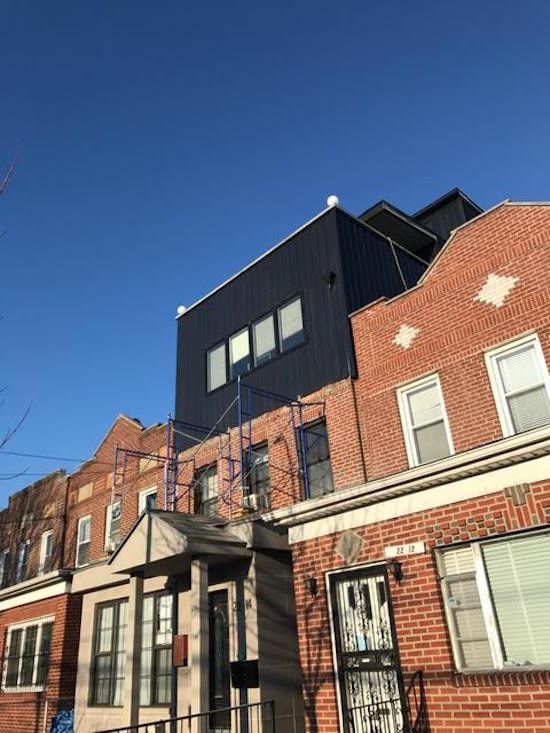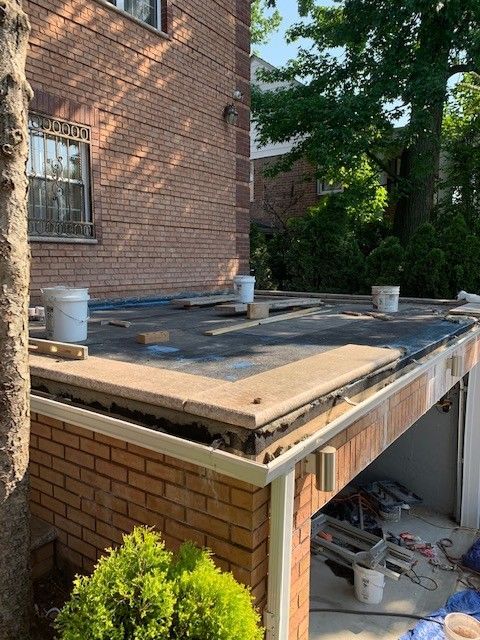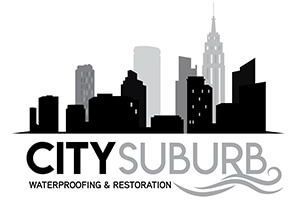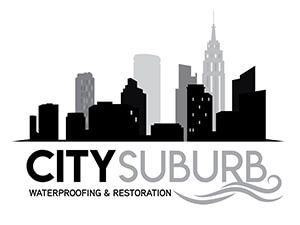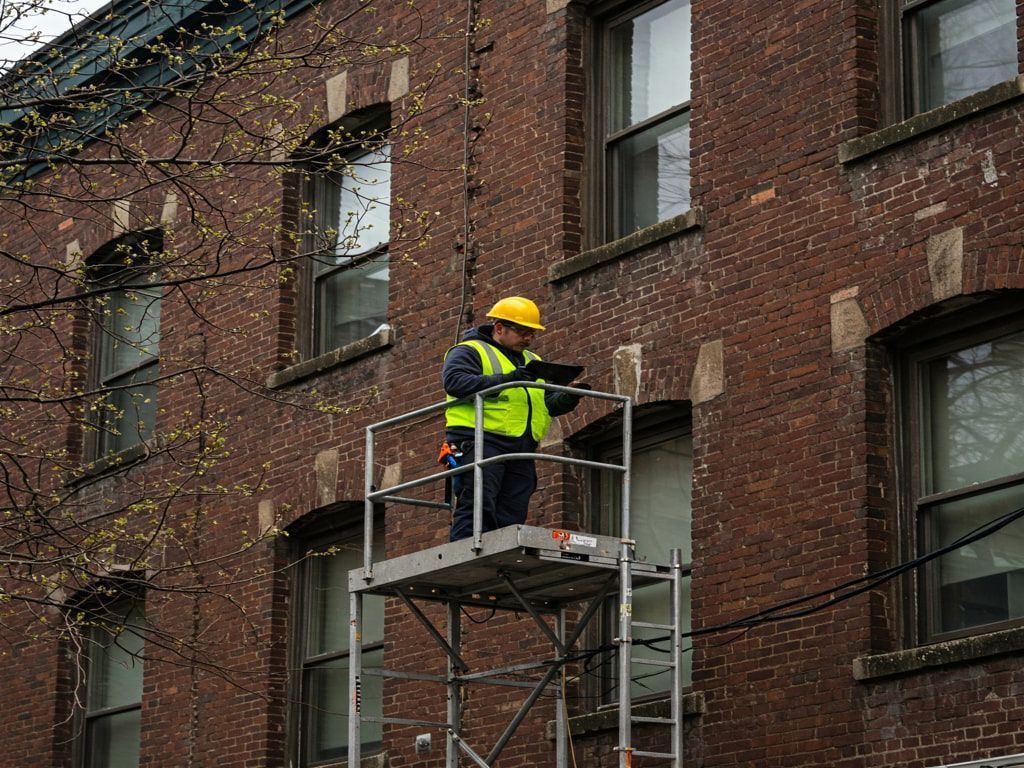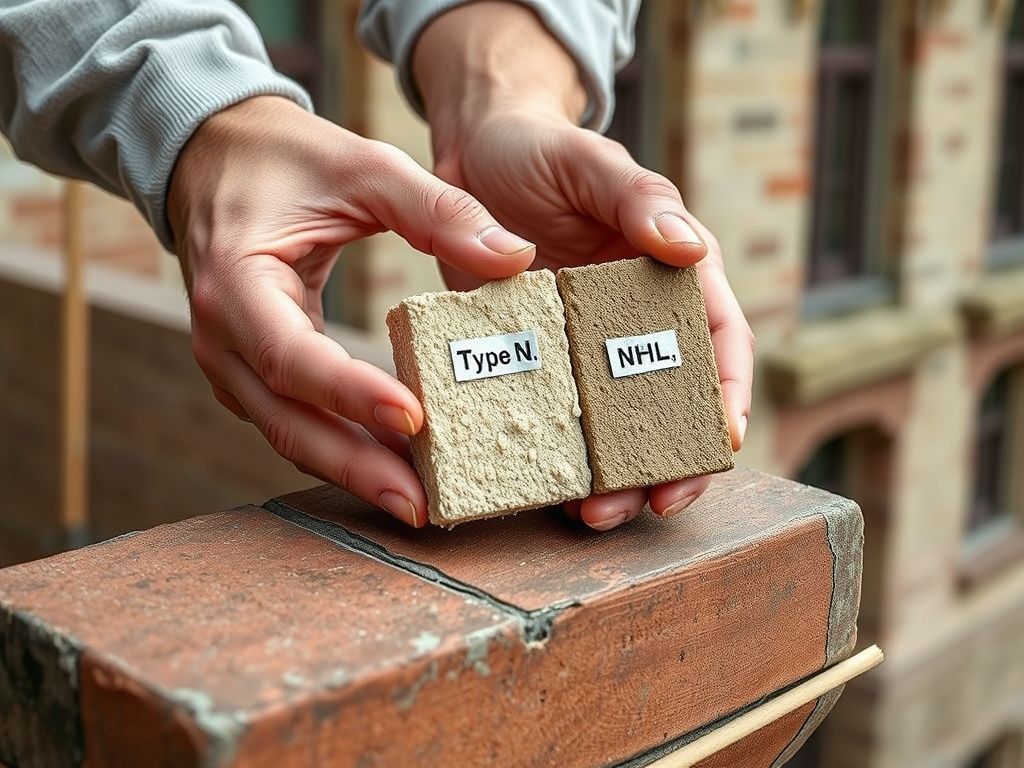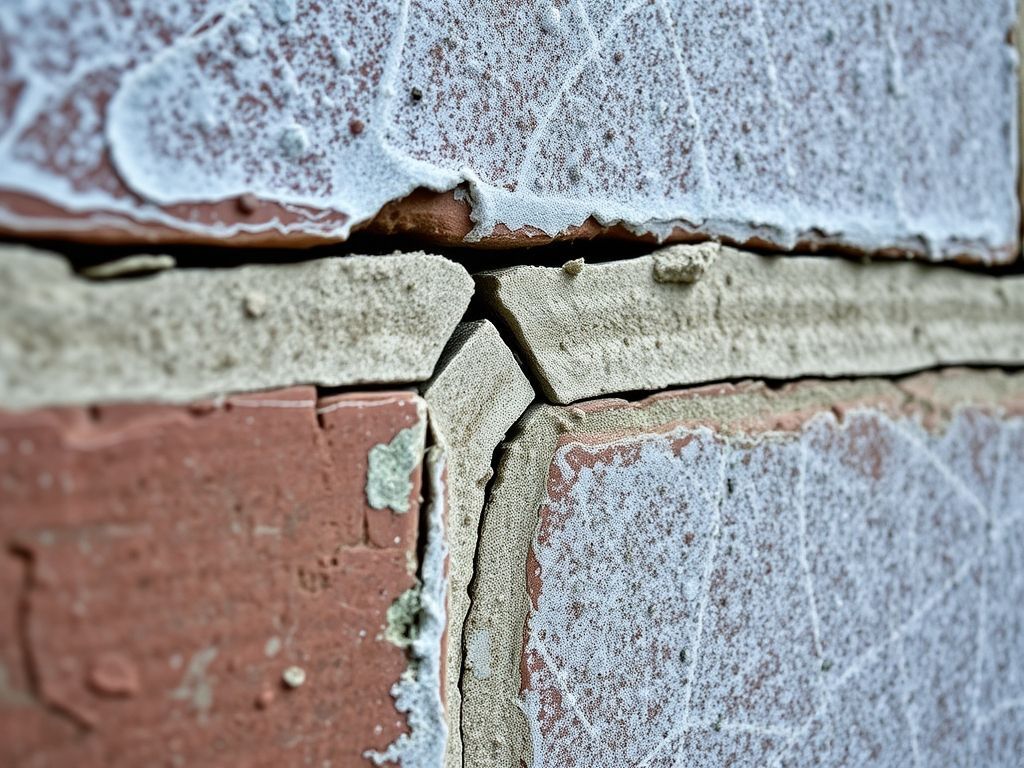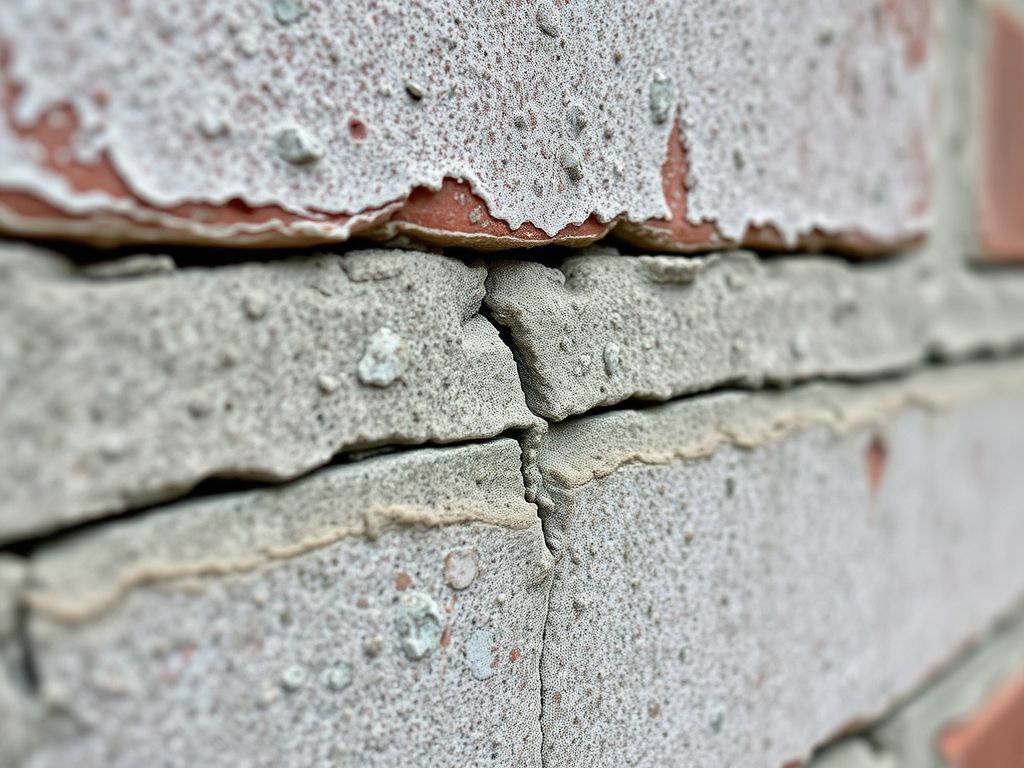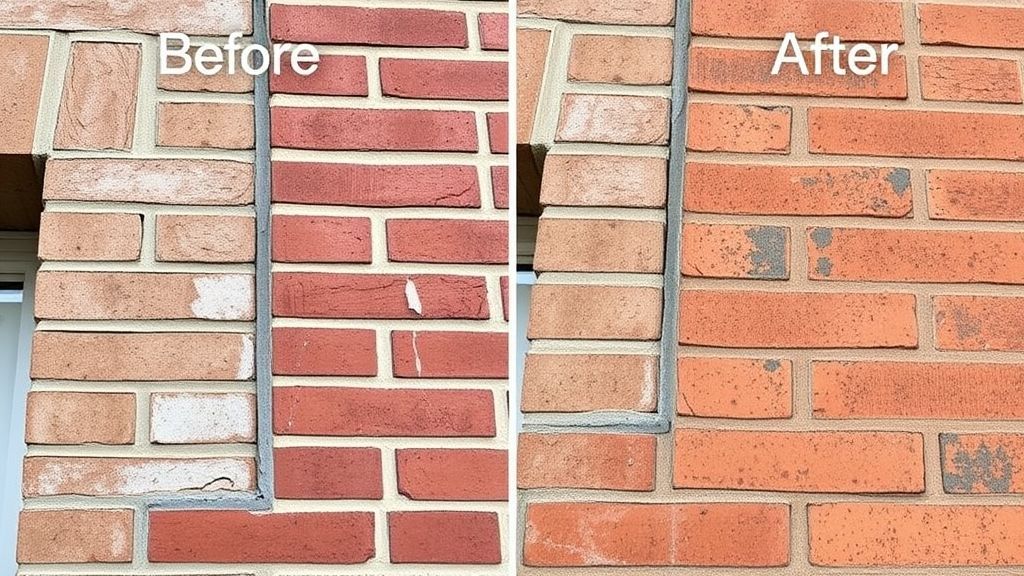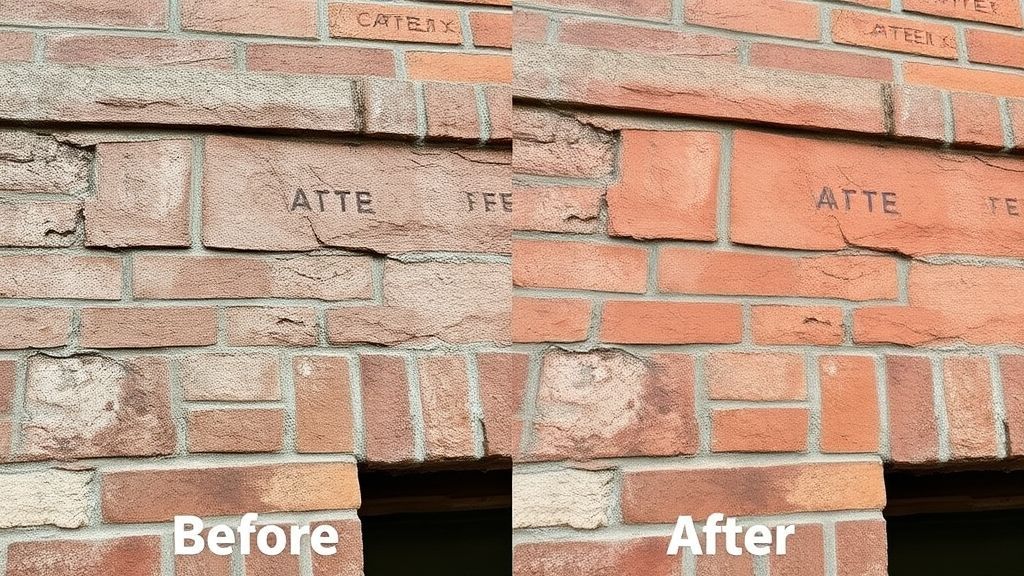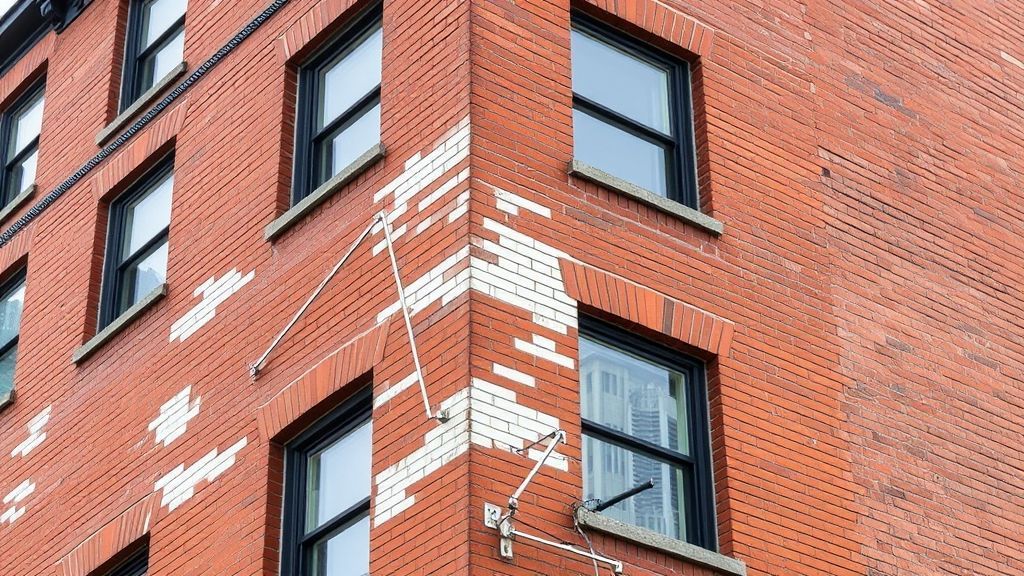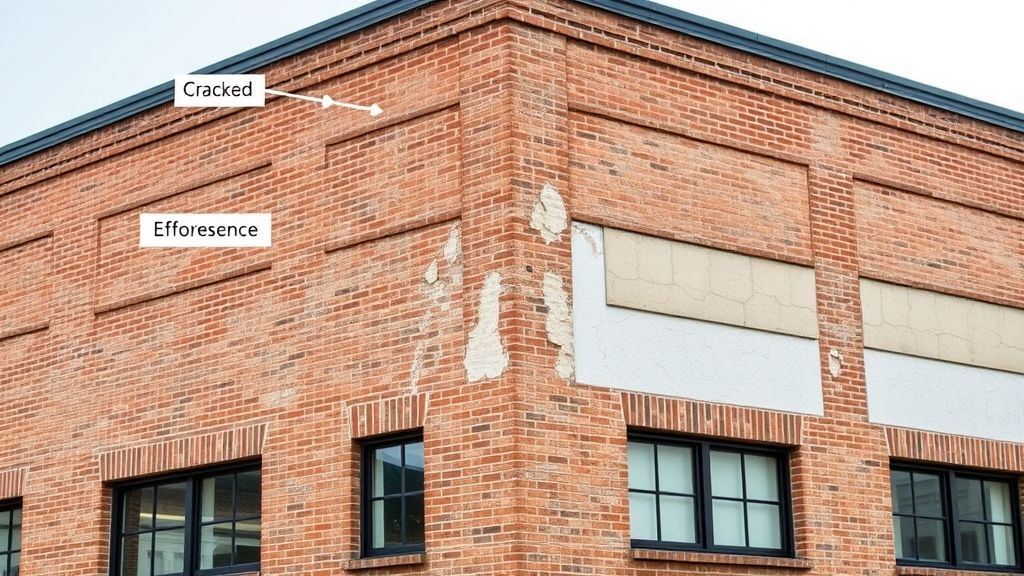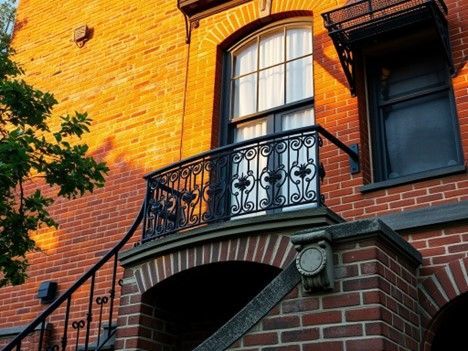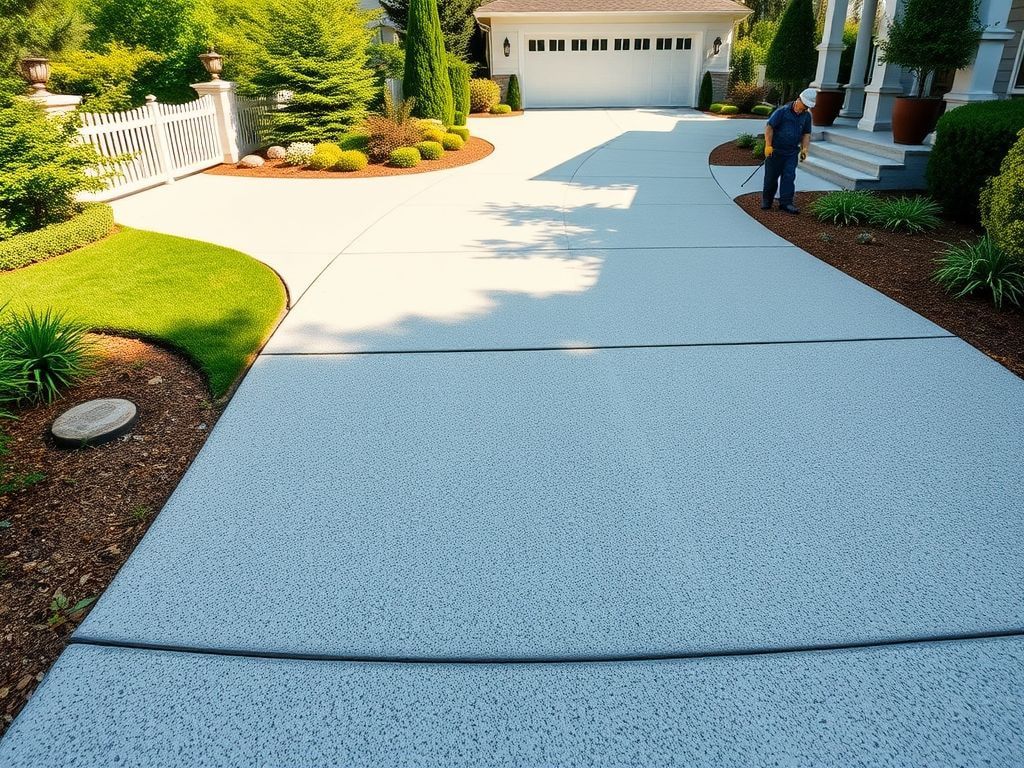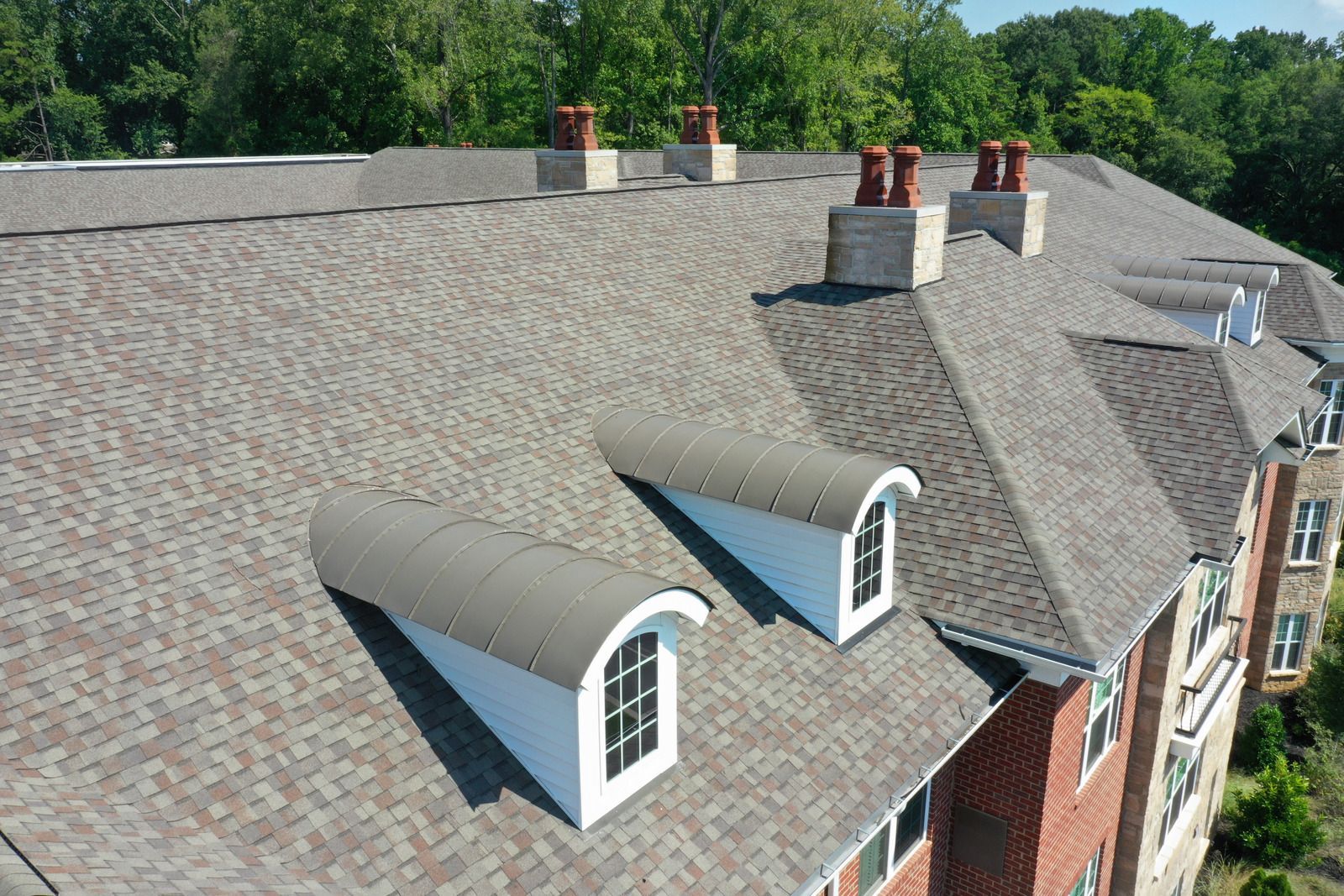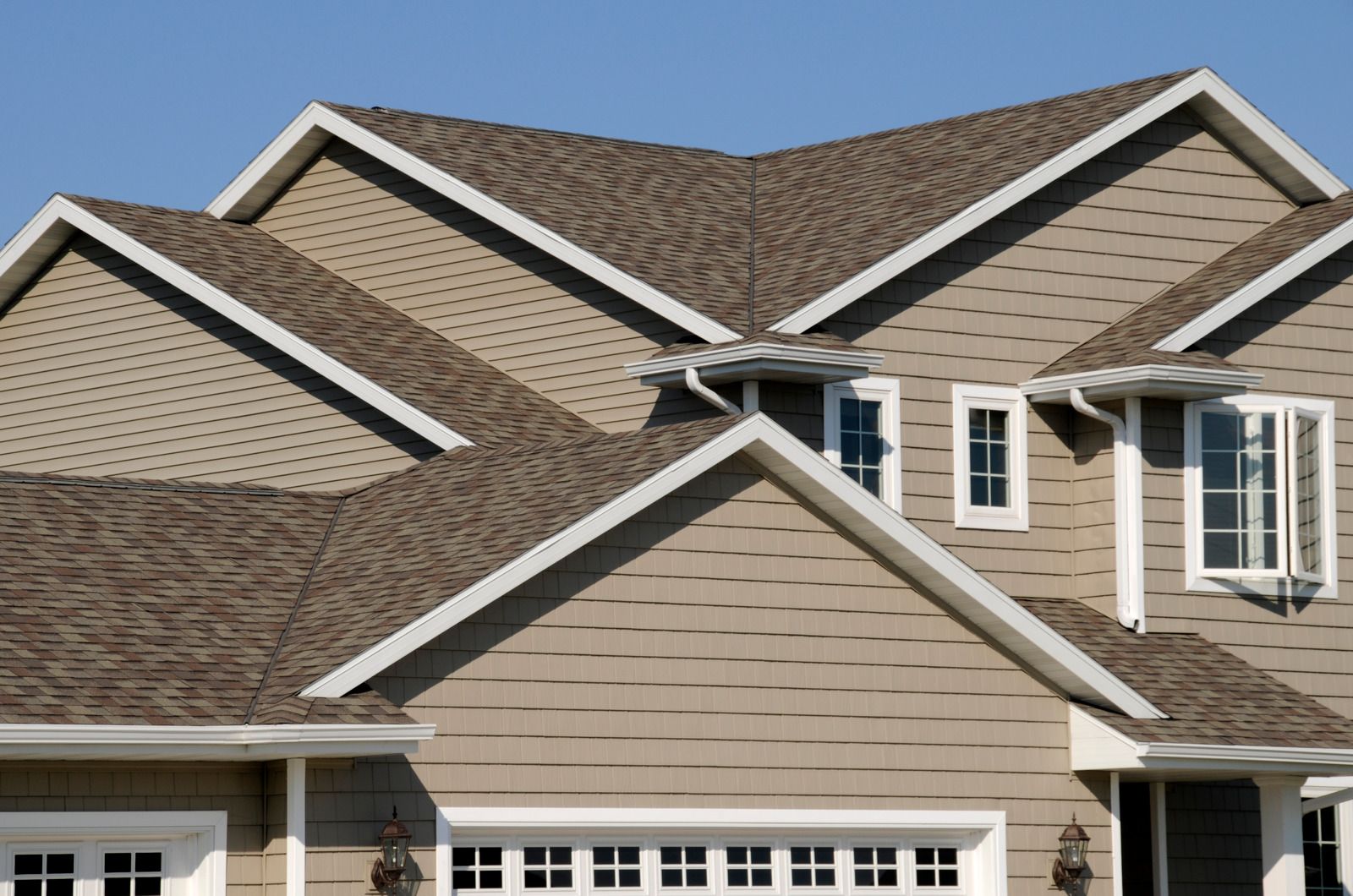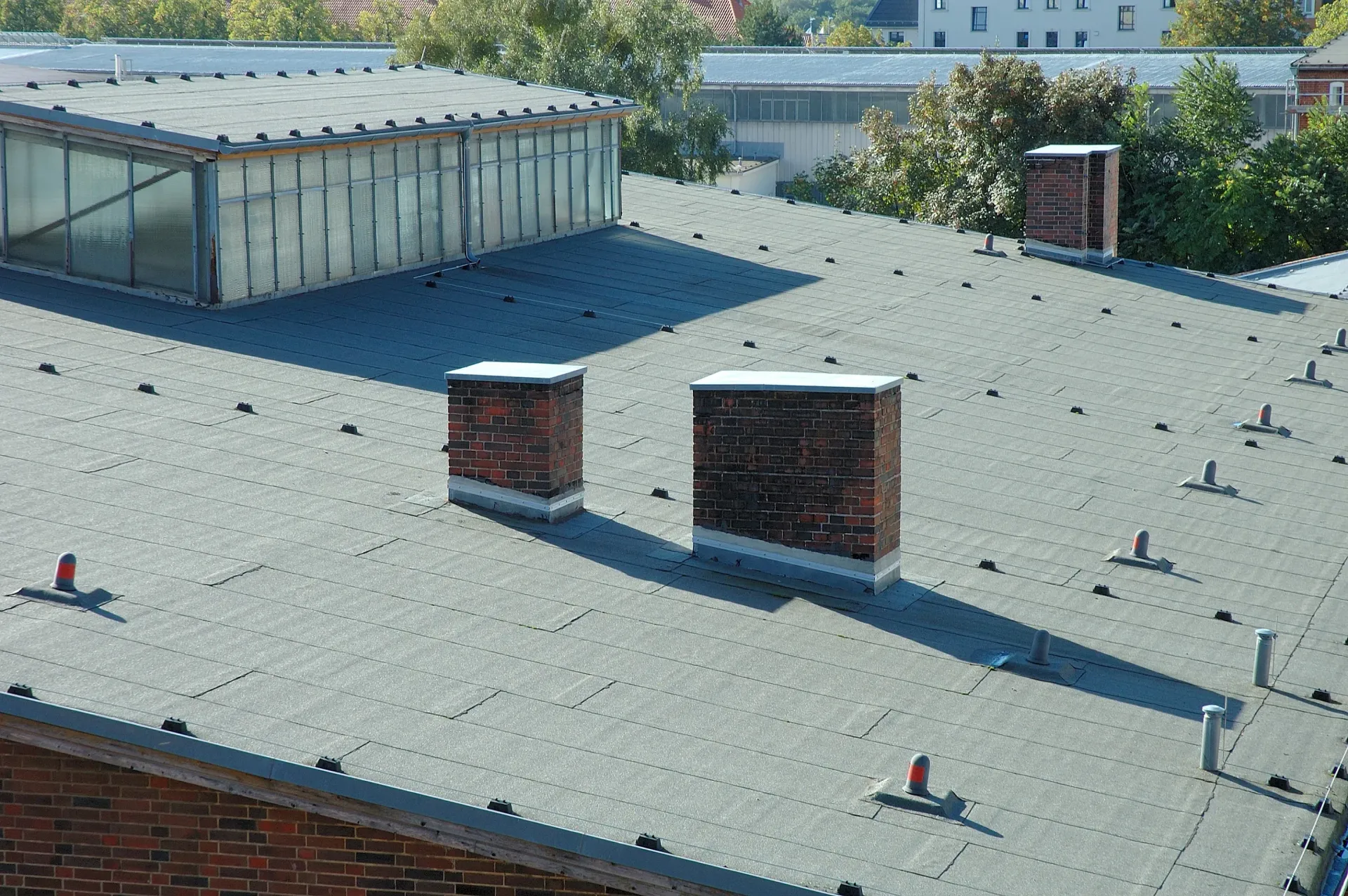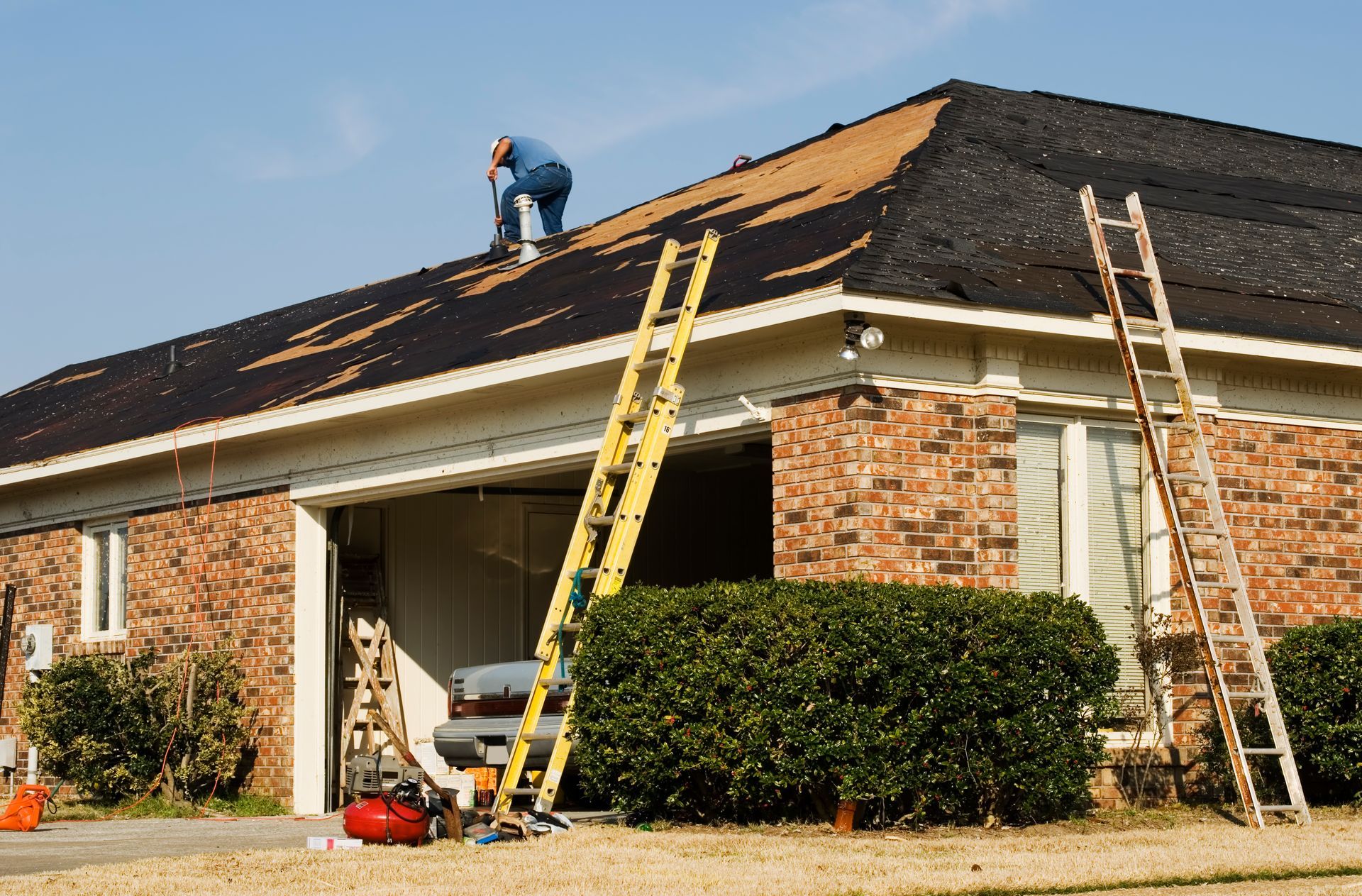Understanding Brick Pointing Deterioration: A Property Manager's Guide to Structural Integrity
Article at a Glance:
- Brick pointing deterioration in Bronx buildings progresses faster due to coastal air, urban pollution, and harsh freeze-thaw cycles, transforming routine maintenance into significant unforeseen expenses when neglected.
- Understanding different mortar types based on building era (pre-war, post-war, modern) is crucial for proper maintenance, as using incompatible materials can accelerate deterioration rather than solve problems.
- Early detection of pointing problems through regular inspections can prevent the cascade effect where water infiltration leads to exponential damage affecting interior walls, window frames, energy efficiency, and potentially structural integrity.
- Strategic assessment frameworks help property managers quantify current conditions, project deterioration rates, and make data-driven decisions about repair techniques (spot pointing, full repointing, or tuckpointing).
- Successful Bronx property management requires navigating unique regulatory requirements, selecting qualified contractors, implementing quality control, and developing effective tenant communication protocols.
Proper brick pointing maintenance transforms from reactive emergency management to strategic asset preservation, reducing costs while protecting long-term property value in the challenging Bronx environment.
When managing properties in the Bronx, you're not just handling buildings—you're protecting investments worth millions. Yet many property managers discover too late that deteriorating brick pointing can transform routine maintenance into significant unforeseen expenses.
The combination of coastal air influence, urban pollution, and harsh Northeast freeze-thaw cycles creates perfect conditions for accelerated mortar deterioration in Bronx buildings. Property managers who defer brick pointing maintenance often face substantially higher costs for emergency repairs later compared to planned maintenance.
This guide bridges the gap between technical masonry knowledge and practical property management. You'll learn how to identify early warning signs, develop strategic assessment frameworks that align with budget cycles, and make informed decisions that protect both your buildings and your bottom line.
Understanding Pointing: More Than Just Mortar
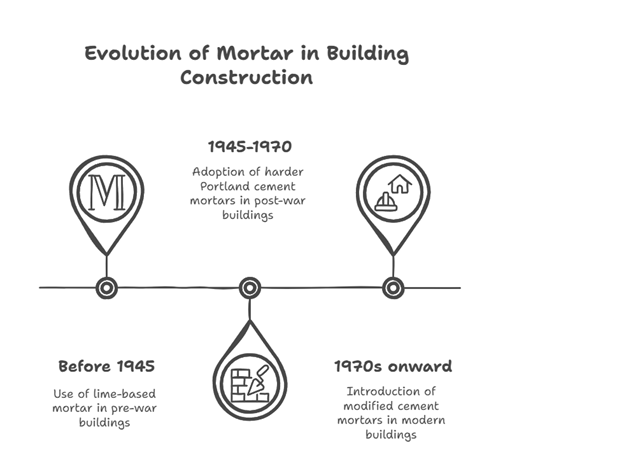
Brick pointing isn't merely cosmetic—it's a critical structural component that directly impacts building integrity. Property managers who understand pointing's core functions recognize it as essential infrastructure, not just routine maintenance.
Speaking plainly, pointing refers to the exposed mortar joint visible on a building's exterior. While the primary mortar bed provides structural support, pointing serves as the critical weatherproofing layer. When intact, pointing prevents moisture penetration, accommodates structural movement, and maintains the wall's thermal performance. When it fails, the entire building envelope becomes compromised.
Mortar Types and Their Significance
Different building eras used distinct mortar formulations, each with unique properties and deterioration patterns:
Pre-war Buildings (Before 1945):
- Typically feature lime-based mortar pointing
- Designed to be slightly sacrificial—slowly eroding over decades while protecting the bricks
- More porous and flexible, allowing buildings to "breathe" and accommodate movement
- Require compatible materials during repairs to prevent accelerated deterioration
Post-war Buildings (1945-1970):
- Often used harder Portland cement mortars
- Less flexible but more durable in some conditions
- Create different deterioration patterns and repair needs
- May develop stress cracks rather than gradual erosion
Modern Buildings (1970s onward):
- Typically use modified cement mortars with additives for enhanced performance
- Designed for specific environmental conditions and building types
- Often require specialized repair approaches
Understanding which mortar type exists in your building is crucial for proper maintenance. Using incompatible materials during repairs can accelerate deterioration rather than solve problems.
The Four Critical Functions of Pointing
From an operational standpoint, pointing doesn't exist in isolation. It's interconnected with window performance, interior wall conditions, and even HVAC efficiency. Professional assessment focuses on understanding the distinct functions pointing serves:
- Structural support: Distributes loads and accommodates building movement
- Weather resistance: Prevents water infiltration while allowing vapor transmission
- Thermal barrier: Maintains building envelope performance
- Brick preservation: Protects the more expensive masonry units from damage
Property managers who translate this technical understanding into strategic planning can achieve better outcomes. Rather than waiting for obvious failure, incorporating pointing assessment into regular building evaluations and capital planning cycles helps prevent emergency situations.
Identifying Problems: Early Detection Saves Costs
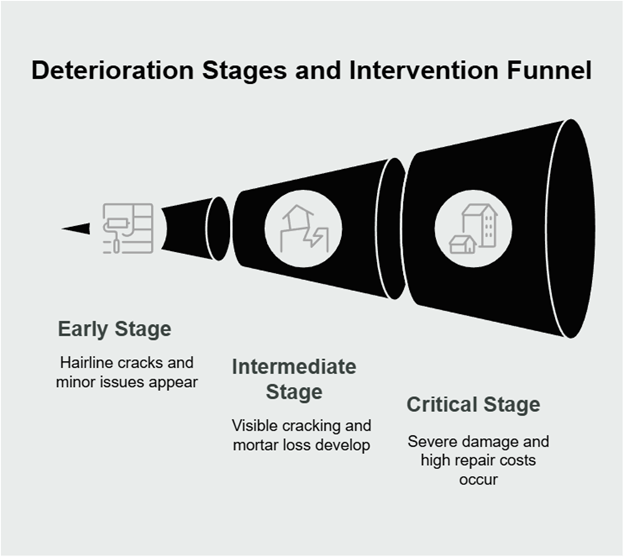
For Bronx property managers, spotting pointing deterioration early means the difference between planned maintenance and emergency repairs. Deterioration progresses through distinct stages, each requiring different intervention strategies.
Deterioration Stages and Warning Signs
Early Stage (1-3 years before serious issues):
- Hairline cracks and slight discoloration
- Mortar surface feels slightly sandy when touched
- Minor erosion at joint faces
- Subtle changes easily missed during cursory inspections
Intermediate Stage:
- Visible cracking patterns
- Receding mortar joints
- Areas where pointing has completely fallen out
- Efflorescence (white, powdery deposits) on brick surfaces
- Most common on north-facing walls and below window sills
Critical Stage:
- Deep mortar loss exceeding 3/4 inch
- Loose or displaced bricks
- Visible water penetration to interior surfaces
- Secondary damage to adjacent systems
- Significantly higher repair costs compared to early intervention
Detection Patterns and Timing
Seasonal timing significantly impacts assessment accuracy:
- Fall inspections (after rainy periods) reveal moisture patterns
- Early spring assessments highlight freeze-thaw damage
- The harsh Bronx winters create distinctive deterioration patterns
Specific deterioration patterns indicate underlying causes:
- Vertical cracking along mortar joints: structural movement
- Horizontal cracking: water penetration and freeze-thaw cycling
- "Stair-step" cracking through mortar and brick: foundation issues
- Uniform erosion across south-facing elevations: weather exposure
- Localized deterioration below roof edges: drainage problems
Property managers who develop pattern recognition skills can move from reactive to preventative approaches, significantly reducing emergency repair costs.
Consequences of Neglect: Beyond Aesthetic Concerns
When brick pointing fails, the consequences extend far beyond appearance. Understanding these ripple effects provides property managers with leverage when justifying maintenance expenditures to ownership.
The Cascade Effect of Water Infiltration
Water infiltration represents the most immediate threat. Once moisture penetrates compromised pointing, it initiates damage throughout adjacent building systems:
- Water expands by approximately 9% when it freezes, exerting pressure on the surrounding masonry
- Each freeze-thaw cycle widens existing cracks
- Deterioration accelerates exponentially rather than linearly
Consider this typical progression for a Bronx pre-war building with unaddressed pointing deterioration:
- Initial year: Localized pointing failure appears minor
- Years 2-3: Moisture penetrates deeper, causing interior plaster damage and initial brick spalling
- Years 4-5: Window frames show moisture damage, efflorescence becomes widespread
- Year 5+: Brick displacement begins, energy costs rise measurably, potential structural concerns emerge
This timeline accelerates significantly on north-facing elevations and upper floors, where Bronx buildings experience greater weather exposure.
Operational and Financial Impacts
Deteriorated pointing directly impacts performance in several key areas:
- Tenant satisfaction declines due to drafts, interior moisture, and visible deterioration
- Building energy performance suffers as thermal bridges develop
- Maintenance costs increase for interior repairs treating symptoms rather than causes
- Insurance premiums may rise following moisture-related claims
- Property valuation typically declines when exterior envelope issues become apparent
Regulatory Compliance Concerns
Under NYC's Facade Inspection and Safety Program (FISP), which has superseded and expanded on what was formerly known as Local Law 11, deteriorated pointing frequently triggers violations requiring documented repair plans. These mandatory corrections often come with compressed timelines, eliminating the opportunity for strategic planning and competitive bidding.
Pointing deterioration can often be the starting point for broader building envelope failure. Property managers who recognize these connections can develop compelling business cases for preventative maintenance.
Solutions and Strategies: From Assessment to Implementation
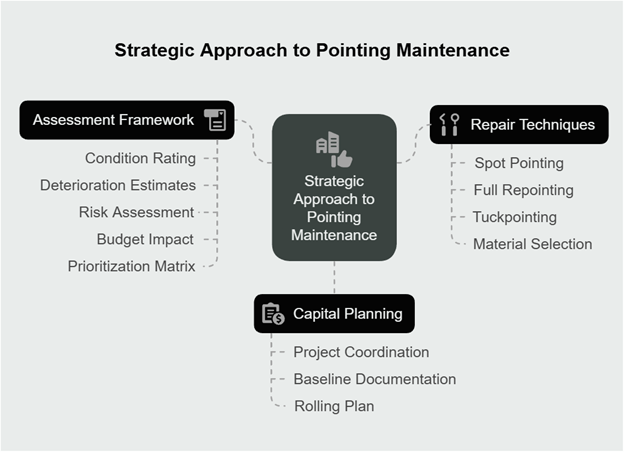
Successful property managers approach pointing maintenance as a strategic asset management function rather than a reactive repair process. This perspective shift transforms how deterioration is evaluated, prioritized, and addressed.
Strategic Assessment Framework
When examining ROI on pointing maintenance, implement a structured assessment methodology that quantifies current conditions while projecting future deterioration rates. For multi-building portfolios, this standardized approach enables apples-to-apples comparison across different properties.
A practical assessment framework includes:
- Condition rating scale (1-5) for each building elevation
- Deterioration progression estimates based on building age and exposure
- Risk assessment incorporating structural importance and occupancy factors
- Budget impact analysis comparing immediate vs. deferred maintenance costs
- Prioritization matrix weighing urgency against logistical constraints
This systematic approach allows for data-driven decisions rather than reactive responses.
Repair Techniques and Materials Selection
Selecting appropriate repair techniques depends on deterioration extent and building characteristics:
Spot Pointing:
- Addresses localized deterioration where surrounding mortar remains sound
- Involves removing and replacing only damaged sections
- Cost-effective for early intervention
- Requires careful material matching to prevent moisture trapping
- Most effective when deterioration affects less than 15-20% of the elevation
Full Repointing:
- Comprehensive removal and replacement of mortar across entire elevations
- Necessary when deterioration exceeds 20-25% of surface area
- Ensures uniform appearance and performance
- Allows for systematic correction of underlying issues
- Higher initial cost but better long-term value for extensively deteriorated facades
Tuckpointing:
- Specialized technique using contrasting colors to create the illusion of fine joints
- Primarily aesthetic but can improve water resistance
- Common in historic preservation applications
- Requires skilled craftsmen with specific experience
Material selection must consider the original mortar composition:
- Portland cement mortars are too rigid for pre-war buildings with lime-based mortar
- Lime mortars require specific curing conditions and expertise
- Modern hybrid formulations can provide balanced performance when properly specified
- Color matching affects both aesthetics and the building's ability to shed water
Capital Planning and Coordination
From a capital planning perspective, pointing work should align with broader improvement cycles. The strategic advantage comes from coordinating pointing repairs with other exterior projects like window replacement, roof work, or waterproofing. This coordination improves technical outcomes and distributes mobilization costs across multiple budget categories.
For diverse property portfolios, develop building-specific baseline documentation that tracks:
- Original construction characteristics and materials
- Historical repair campaigns and methodologies
- Environmental exposure factors specific to each property
- Observed deterioration rates from previous inspection cycles
This institutional knowledge provides critical context for assessment and becomes particularly valuable during management transitions. Organizations can leverage these records to develop deterioration prediction models specific to their portfolio.
One of the most effective approaches incorporates pointing maintenance into a rolling 3-5 year plan that addresses deterioration in strategic phases. This approach stabilizes budget requirements while addressing the most critical areas first.
Bronx-Specific Considerations: Local Expertise Matters
The Bronx's unique building stock, regulatory environment, and climate conditions create distinct implementation challenges that property managers must navigate.
Contractor Selection and Qualification
When selecting contractors for pointing projects, look beyond general masonry experience to evaluate specific qualifications relevant to Bronx buildings. Contractors with demonstrated experience in similar building types better understand the nuances of historic mortar compositions and typical deterioration patterns.
Key qualification criteria should include:
- Documented experience with similar age buildings in the Bronx
- Familiarity with NYC Department of Buildings requirements
- Knowledge of appropriate mortar formulations for different construction eras
- Demonstrated ability to match existing mortar appearance
- Comprehensive insurance coverage exceeding minimum requirements
Navigating Regulatory Requirements
Pointing work in NYC typically requires Department of Buildings permits, with additional approvals for landmarks or special districts. Strategic timing of permit applications can significantly impact project schedules, as approval backlogs often develop during peak construction seasons.
Notable regulatory considerations include:
- FISP (Facade Inspection and Safety Program) requirements and documentation
- DOB NOW, the online portal for Department of Buildings permitting and approvals
- Landmarks Preservation Commission approval for designated historic buildings
- Department of Buildings permit timing and sequential inspections
- Energy code compliance for comprehensive facade work
- Potential contributions to Local Law 97 carbon emissions compliance goals
Quality Control and Project Management
Quality control oversight becomes particularly important for pointing projects, where improper installation can create new problems rather than solving existing ones. Develop inspection protocols for critical project stages:
- Surface preparation (cleaning and old mortar removal)
- New mortar mixing and matching
- Joint packing and tooling techniques
- Curing provisions and weather protection
Property managers should document these quality control observations throughout the project, creating valuable records for future reference. This documentation serves multiple purposes: verifying contractor compliance, establishing performance baselines, and demonstrating due diligence.
Weather and Seasonal Planning
Weather contingency planning takes on particular importance in the Bronx, where coastal weather patterns can introduce unexpected rain days even during optimal seasons. Consider these seasonal factors:
- Optimal conditions typically limited to April-June and September-October
- Minimum temperature requirements for proper mortar curing (typically above 40°F)
- Protection requirements for work during marginal conditions
- Scheduling competition during prime weather windows
- Winter work limitations and special provisions
Project schedules should incorporate realistic weather allowances based on historical patterns, with contingency plans for protecting in-progress work during sudden weather changes.
Tenant Communication and Management
Even minor pointing projects generate noise, dust, and potential access disruptions. From an operational standpoint, developing communication protocols that address tenant concerns proactively can prevent complaint escalation and potential lease disputes. Consider:
- Standardized notification templates with project specifics
- Progress update mechanisms for extended projects
- Clear points of contact for tenant concerns
- Documented procedures for handling disruptions
- Coordination with tenant improvement schedules
This strategic approach to tenant communication maintains positive relationships while facilitating necessary building maintenance.
Conclusion: Strategic Masonry Management
Property managers in the Bronx face unique challenges when addressing brick pointing deterioration. The borough's distinctive building stock, harsh climate conditions, and regulatory requirements create a complex maintenance landscape that demands both technical understanding and strategic planning.
By developing systematic assessment protocols, property managers can transform pointing maintenance from reactive emergency management to strategic asset preservation. This approach not only reduces emergency repair costs but also enhances building performance, improves tenant satisfaction, and protects long-term property value.
Success requires balancing technical masonry knowledge with practical implementation strategies. Property managers who develop this integrated perspective can make more informed decisions, allocate resources more effectively, and build stronger cases for preventative maintenance funding.
Start by documenting current pointing conditions across your properties, developing standardized assessment criteria, and creating a prioritized maintenance roadmap. This foundation will position you to make more informed decisions that balance immediate needs against long-term asset preservation goals.
Frequently Asked Questions (FAQs)
Q: How does brick pointing deterioration affect overall building energy efficiency?
A: Deteriorated pointing can create thermal bridges and air leakage pathways that affect energy efficiency in older buildings. This hidden cost should factor into repair ROI calculations. Pointing repairs may qualify for energy improvement incentive programs in commercial properties, as they directly contribute to building envelope performance.
Q: What are the liability implications of deferring pointing maintenance once deterioration is documented?
A: Once deterioration is documented, property managers assume informed responsibility for resulting damage or safety issues. Insurance claims may be denied if deferred maintenance is determined to be a contributing factor. Implement formal documentation procedures for inspection findings, repair recommendations, and decision rationales to demonstrate due diligence.
Q: How should pointing repairs be prioritized across a portfolio of multiple properties?
A: Develop a multi-factor assessment matrix that considers building age, construction type, exposure conditions, occupancy patterns, and observed deterioration rates. Implement a standardized condition rating system that enables comparison across different properties. Balance immediate risk mitigation with strategic grouping of projects for contractor efficiency and economic advantage.
Frequently Unasked Questions (FUQs)
Q: How do historical repair methods impact current pointing assessment?
A: Previous repair campaigns may have used inappropriate materials (particularly Portland cement in buildings designed for lime mortar), creating hidden stress points in masonry. These incompatible materials accelerate deterioration through differential expansion rates and moisture trapping. Research building repair history and identify material interfaces before planning interventions.
Q: What organizational barriers might prevent effective pointing maintenance programs?
A: Siloed decision-making between facilities, finance, and property management teams often impedes comprehensive pointing strategies. Annual budget cycles may not align with optimal repair timing, creating deferred maintenance cycles. Knowledge transfer gaps during property management transitions frequently result in lost institutional knowledge about building envelope history. Cross-functional planning processes can help overcome these systemic challenges.
Q: How does pointing deterioration interact with FISP requirements?
A: Deteriorated pointing is frequently cited in Facade Inspection and Safety Program violations, triggering mandatory repair timelines and potential penalties. However, FISP inspections primarily focus on safety concerns rather than comprehensive envelope assessment. Property managers should implement more stringent pointing evaluation criteria than minimum FISP requirements, as pointing deterioration that doesn't yet constitute a safety violation may still indicate significant underlying issues.
Q: What stakeholder communication strategies best explain pointing deterioration and repair needs?
A: Technical explanations often fail to resonate with financial decision-makers who control budgets. Develop multi-level communication approaches that translate technical concerns into business implications relevant to different stakeholders. Prepare visual documentation packages showing deterioration consequences and establish benchmarking metrics that demonstrate performance relative to similar properties. Frame pointing maintenance as asset protection rather than simple repair.
Extend the Life of Your Building with Expert Brick Pointing
Cracked or deteriorating mortar can lead to water damage, higher repair costs, and structural issues—don’t wait until it’s too late! At City Suburb, our expert brick pointing services help seal out moisture, improve weather resistance, and enhance your building’s longevity.
🔨 Serving the Bronx, Brooklyn, Queens, Manhattan, Long Island, and surrounding areas, we provide high-quality masonry solutions tailored to your property's needs. Contact us today for a free estimate and proactive maintenance that saves you money in the long run!
⭐ Customer Testimonial:
"City Suburb did an awesome job on my brick pointing project! Ravi and his team were professional, tidy, and explained every detail of the job. I highly recommend them!" –
Domingo Aviles
🔗 Follow us for updates and expert tips!
Protect your property—schedule your brick pointing service today! 🏢🔧


